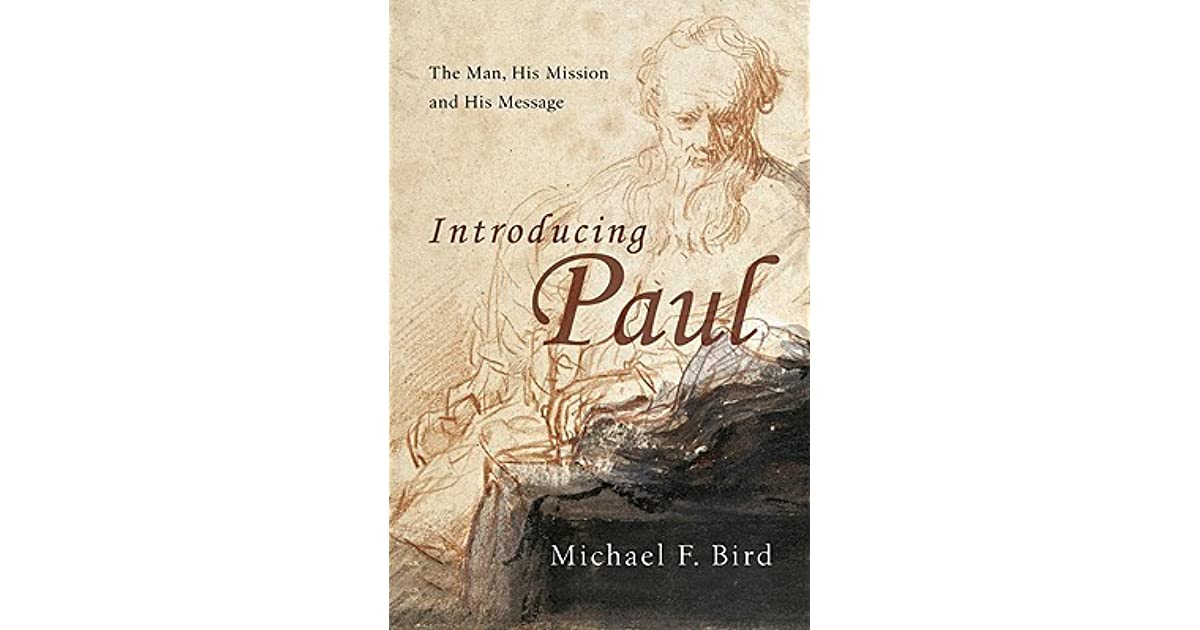Pope Benedict XVI declared 2008 to be the “Year of The Apostle Paul” in celebration of the apostle’s 2000th birthday. Coming to terms with the theology expressed in the letters of Paul has kept theologians and pastors busy for nearly two millennia now.
Michael Bird’s new book, Introducing Paul: The Man, His Mission and His Message
Introducing Paul combines the best of these approaches. Bird delves into Pauline theology, the specific letters, the story of Paul’s life. And he accomplishes these tasks in less than 200 pages.
Bird is careful to read Paul in his own historical context. Many times in the book, he insists that we first realize that Paul’s letters are not written to us, even if God intends that the letters be for us. If we are to understand Paul rightly, we must read him in his own context.
“If the Paul we claim to know looks and sounds a lot like us, then that is probably a good indication that we do not know him as well as we think we do. There is always a temptation to recruit him to our cause, to make our enemies his enemies, our beliefs his beliefs… If we can be mature enough to let Paul be Paul and treat his letters as windows into his world rather than as deposits of theological dogma, then we stand a chance of meeting him anew, letting him speak for himself in his language, on his terms and for his purposes.” (12, 13)
Bird starts off by talking about Paul the man. He focuses on five important aspects of the story of Paul’s life: the persecutor of the church, the greatest missionary who ever lived, a world-class theologian, a pastor with a heart for the church, and the martyr who died for his faith. Bird describes as a “maverick.”
Bird spends a good deal of time recounting Paul’s conversion experience. He argues for continuity in Paul’s thought after coming to faith in Christ. Against some scholars who argue for late-life shifts in Paul’s theology, Bird believes that his theology remained generally stable from conversion until his martyrdom. The conversion experience is central for understanding Paul:
“This encounter with the risen Jesus had an enormous impact on his continuing religious experience of God, on his missionary drive and upon his theological reflection about God, Israel, Torah and salvation. That grace-event killed Saul the Pharisee and birthed Paul the apostle.” (37)
From there, Bird spends considerable time familiarizing his readers with “the stories behind the Story.” In order to properly understand Paul, we must know the stories about God and creation, Adam and Christ, Abraham and Israel, Jesus and the church. These worldview stories provide frameworks into which we can fit the letters of Paul.
After he sets up the historical framework, he then launches into a chapter that gives a brief overview of the historical circumstances, original audience, and basic theology of each of Paul’s letters. In a single chapter, Bird successfully surveys all of the letters.
What makes Bird’s contribution especially timely is the way in which he weaves together old and new perspectives on Paul. He has great appreciation for N. T. Wright and for other New Perspective authors; yet he affirms the traditional view of imputation of Christ’s righteousness:
“Although no text explicitly says that Christ’s righteousness is imputed to believers, nonetheless, without some kind of theology of imputation a lot of what Paul says about justification does not make sense…imputation is the integrating point for a variety of ideas in Paul’s letters.” (97)
Bird attempts to do what many believe is impossible: incorporate the best aspects of the New Perspective within a largely traditional Reformed framework.
Some of Bird’s views are unconvincing. I disagree with his take on Romans 7. Likewise, though Bird does not advocate egalitarianism or complementarianism, he clearly leaves the egalitarian option open.
I was also disappointed to not see any discussion at all about the inspiration of the Scriptures or at least the inspiration of Paul’s letters (which is ultimately the reason we should pay attention to what Paul says). Theories of inspiration seem to be assumed in this book rather than stated. Perhaps treatment of this subject is missing due to the brevity of the book.
But overall, Introducing Paul serves as a wonderful introduction to Paul’s theology. It covers the relevant material in a way that is easy for the reader to understand, and it provides a good overview of the main issues in Pauline studies.
